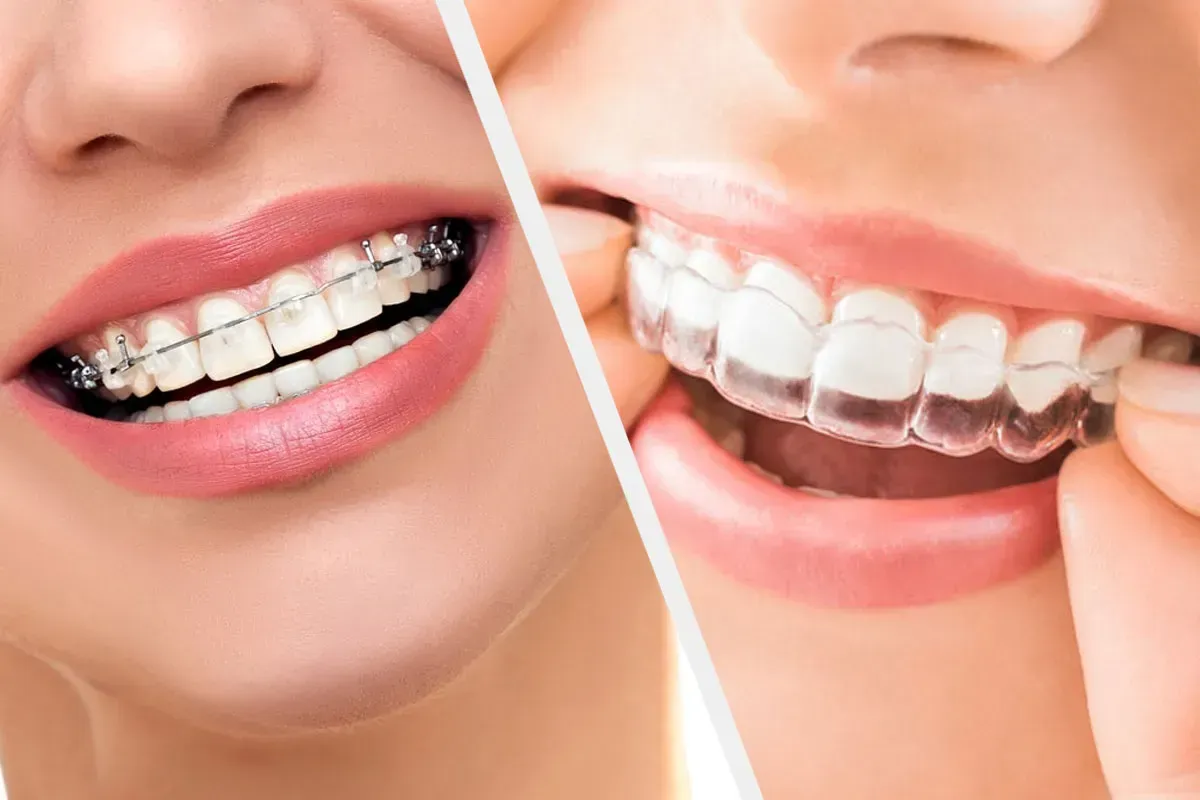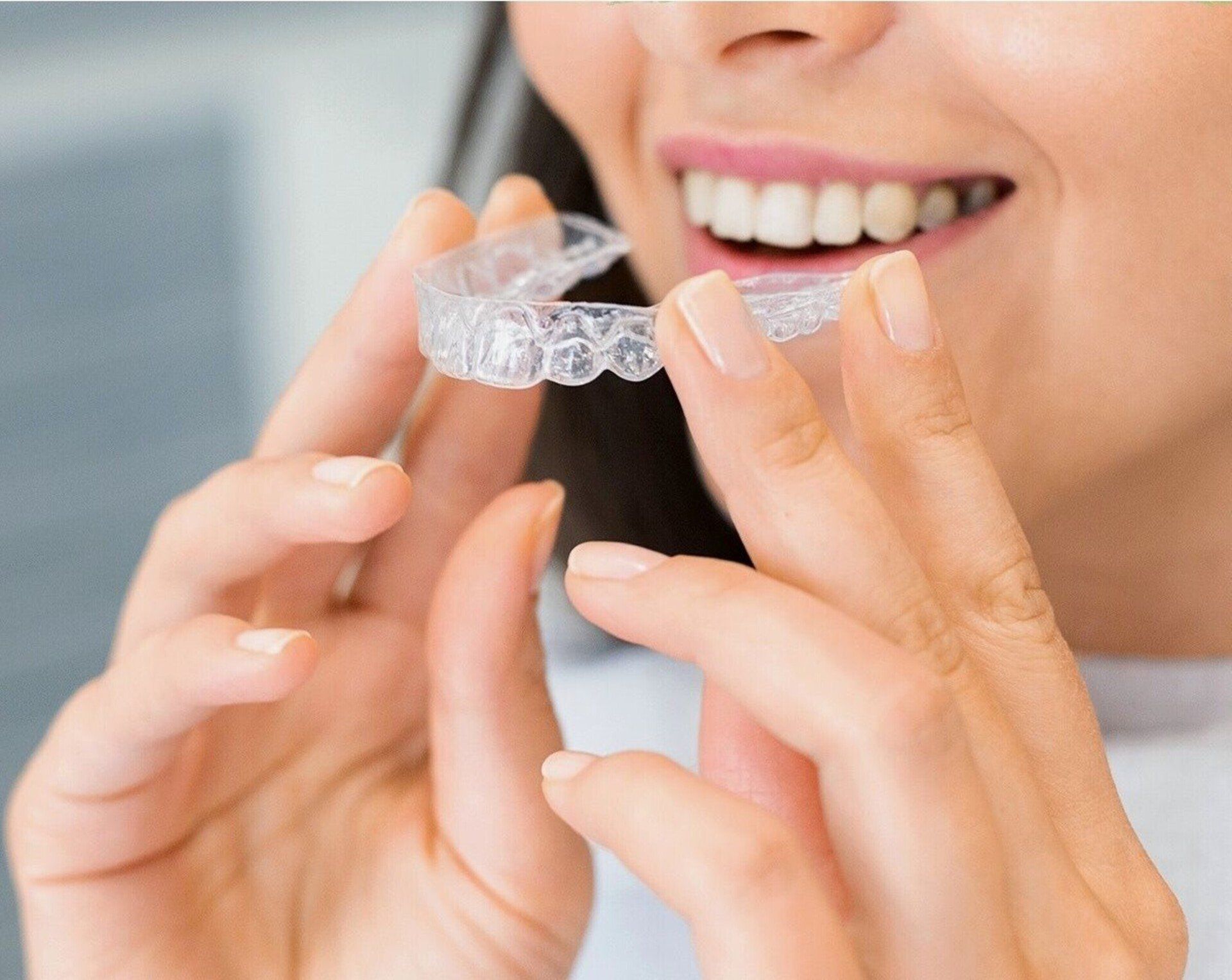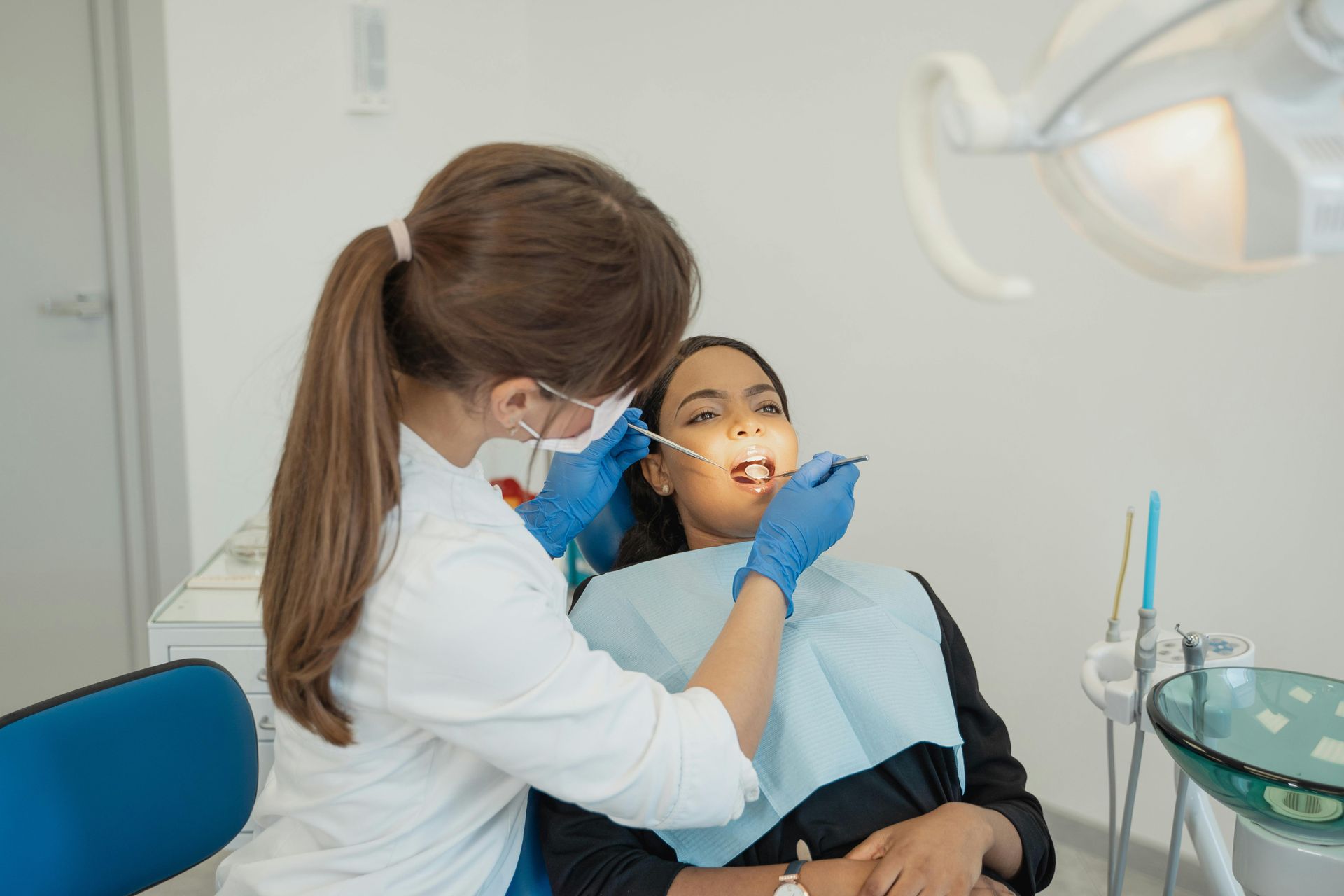1967 Lawrence Ave E, Unit 4, Scarborough, ON M1R 2Z2 | 647-955-3235
Combatting Bad Breath: A Comprehensive Guide to Treatment Options
Understanding Bad Breath: What It Is
Bad breath, also known as halitosis, is a common issue that can affect anyone. The condition is characterized by an unpleasant odor that comes from the mouth. It is generally a result of poor dental hygiene but might also be an indicator of other health conditions or diseases.
The main cause of bad breath is the buildup of bacteria in the mouth, which break down food particles and release foul-smelling gases.
Factors like dry mouth, which decreases the flow of saliva necessary to cleanse the mouth, can exacerbate the situation. In some cases, medical conditions such as periodontal disease, also known as gum disease, can contribute to bad breath. Meanwhile, health care providers have noted that systemic diseases like Gastroesophageal reflux disease (GERD), kidney disease, and certain types of cancers may also have bad breath among their symptoms.
Maintaining good oral hygiene, such as regular brushing and flossing, is vital for keeping bad breath at bay. Regular dental checkups are essential, as healthcare professionals can provide professional cleaning, which can assist in managing conditions like periodontal disease that lead to bad breath.
Common Causes of Bad Breath
Bad breath, medically termed as halitosis, can arise from a variety of factors. The primary culprit is often the bacterial breakdown of food particles in the mouth, leading to the release of foul-smelling gases. Dry mouth condition, or xerostomia, wherein the flow of saliva is reduced, can lead to inadequate rinsing away of food particles, contributing to bad breath. Tobacco use is another significant contributor, as it can cause its own unpleasant mouth odor and also damages gum tissue, increasing the risk of gum disease. Dietary choices can also influence breath; for instance, foods like onions and garlic are notorious for leaving a lasting odor. Medications may have side effects that reduce saliva or release chemicals that can be carried on the breath. Acid reflux or Gastroesophageal reflux disease (GERD) brings up stomach acids into the throat and mouth, contributing to an acidic, sometimes unpleasant smell. Lastly, gum disease, also known as periodontal disease, creates a breeding ground for bacteria that produce malodorous compounds. These are just a few common sources of bad breath, but they highlight the range of both oral and systemic factors that can affect one's breath.
Dry Mouth
Dry mouth, or xerostomia, stems from a decrease in the production of saliva by the salivary glands. Saliva is crucial as it not only aids in digestion but also helps to cleanse the mouth by washing away food particles. Without sufficient saliva, the mouth is less effective at neutralizing acids produced by plaque and less capable of washing away dead cells that accumulate on the tongue, gums, and cheeks. These cells decompose and can cause bad breath. A variety of circumstances can lead to dry mouth, including certain medications, such as those for high blood pressure and depression, radiation therapy for cancer treatment, or diseases that affect the salivary glands.
Tobacco Use
The use of tobacco products is closely linked to bad breath. Tobacco users are much more likely to suffer from gum disease, a common source of oral malodor. In addition, the inhalation of smoke dries out the mouth, creating an environment where harmful bacteria thrive, further exacerbating the problem. Furthermore, tobacco itself has a strong odor, which lingers in the mouth and on breath after use. Quitting tobacco use is not only beneficial for overall health but is also a critical step toward improving breath odor.
Dietary Factors
Foods with strong odors, such as garlic, onions, and certain spices, are absorbed into the bloodstream, transferred to the lungs, and then exhaled, affecting the breath. In addition, high-sugar diets can lead to an increase in the amount of plaque on teeth, and the bacteria that feed on the plaque will release malodorous gases. Low-carb diets might cause the body to break down fat, which produces chemicals called ketones that have a strong aroma and can be smelled on the breath.
Medications
Various medications have side effects that can cause or contribute to bad breath. For example, medications that cause dry mouth, such as antihistamines and diuretics, can indirectly lead to bad breath due to decreased salivary flow. Others, such as nitrates used to treat angina, can produce chemicals that are then released in the breath. It is important for patients on medications to discuss potential side effects with their healthcare providers.
Acid Reflux
Acid reflux, or GERD, is a condition where stomach acids flow back up into the esophagus. When these acids make their way into the mouth, they can lead to a sour taste and bad breath. Long-term reflux can cause chronic bad breath as the acid consistently irritates the throat and affects the smell of the breath. Treatment options for GERD will not only improve the patient's digestion and reduce discomfort but may also help alleviate bad breath.
Gum Disease
Gum disease, or periodontal disease, is a significant cause of bad breath. Caused by the buildup of plaque on teeth, it can lead to swollen gums and bone loss. The bacteria that flourish in the diseased gum pockets produce foul-smelling sulfur compounds. A professional cleaning by a dentist or dental hygienist is necessary to remove the plaque and tartar, and establishing a good oral hygiene routine can help prevent the disease from worsening. Regular dental checkups are essential for monitoring and maintaining gum health to avoid the continuation of bad breath.
Sinus Infections
Sinus infections, or sinusitis, can unexpectedly be the villain behind bad breath. The connection lies in the nasal and throat secretions associated with sinus infections that can lead to a foul odor emanating from the back of the mouth. Sinus infections often cause postnasal drip, which is where mucus runs down the back of the throat and can mix with the bacteria there, exacerbating bad breath.
Recognizing the symptoms of a sinus infection is key to addressing this cause of bad breath. Healthcare providers can suggest various treatment options, such as antibiotics or decongestants, that not only help clear the infection but potentially alleviate bad breath.
Practical Treatment Options
Bad breath, medically known as halitosis, can be a persistent condition that significantly impacts social interactions and self-esteem. While occasional bad breath may be benign, consistent issues may indicate underlying health conditions requiring detailed attention from health care providers.
Treatment options for bad breath are varied and should be tailored to address the specific cause. When bad breath arises from oral hygiene issues, regular professional cleanings at the dentist's office can remove built-up plaque and tackle periodontal disease. A dental professional may also treat dry mouth, a condition where the flow of saliva is reduced, potentially by prescribing artificial saliva products or medication to stimulate salivary glands.
Over-the-Counter Solutions
There are numerous over-the-counter solutions to manage bad breath. Mouthwashes and toothpastes with antibacterial properties can reduce the microbial load in the mouth, which is often a contributing factor. Chewing on sugar-free gum can be an effective measure to improve the flow of saliva and thus mitigate dry mouth, while also helping to dislodge food particles that contribute to bad breath.
Natural Home Remedies
For those seeking natural home remedies, drinking plenty of water aids in maintaining hydration and stimulates the flow of saliva, which is necessary for naturally rinsing away bacteria and food particles. Rinse with a mixture of water and a few drops of peppermint, tea tree, or eucalyptus oil can act as a natural antiseptic. Crunchy fruits and vegetables, like apples and celery, can help clean teeth, while herbs such as parsley, mint, or fennel carry natural aromatic oils that can mask bad odors temporarily.
Lifestyle Changes
Lifestyle changes can significantly impact the prevention and treatment of bad breath. Improvements in dental hygiene routines, including brushing twice daily, flossing, and using tongue scrapers, can reduce the presence of bacteria and food debris. Keeping up with regular dental checkups is vital for maintaining oral health and preventing gum disease and bone loss, which can be factors in bad breath.
Eliminating tobacco products and reducing consumption of odor-causing foods and beverages like garlic, onions, and coffee can also be beneficial. Moreover, managing health conditions like diabetes or adhering to treatment plans for chronic diseases, which can have implications on oral health, is crucial to preventing bad breath.
Nutritional Adjustments
- Limit Sugary Foods: Foods high in sugar can cause an increase in bacteria in the mouth, leading to unpleasant breath odors. Sugar-free gum can be an alternative for freshness.
- Increase Intake of Water-Rich Foods: Fresh fruits and vegetables can increase the flow of saliva and help wash away food particles.
- Eat Probiotic-Rich Foods: Yogurt and other sources of good bacteria can help combat the bad bacteria often responsible for bad breath.
Hydration Tips
- Water Intake: Drinking plenty of water throughout the day keeps the mouth moist and helps wash away food particles and bacteria.
- Decrease Caffeine and Alcohol: These substances can cause dehydration, leading to a reduction in the flow of saliva and, consequently, bad breath.
- Use Humidifiers: In dry climates or environments, a humidifier can help maintain moisture levels in the air, which in turn helps keep the mouth moist.
Importance of Oral Hygiene
Oral hygiene is a crucial component of not only dental health but overall well-being. Poor oral hygiene can lead to a variety of dental and medical conditions such as gum disease, periodontal disease, and increased risk of heart disease and stroke. It also has direct implications on one's confidence and social interactions due to the potential development of bad breath.
Maintaining oral hygiene involves removing dental plaque and food particles that reside in the mouth. If not cleared regularly, plaque hardens to become tartar, leading to inflammation known as gingivitis, which can progress into periodontal disease. This condition is characterized by bone loss around teeth, resulting in loose or lost teeth if not promptly managed. Additionally, infections originating in the mouth can distribute harmful bacteria through the bloodstream to other parts of the body.
Healthcare professionals stress the importance of good oral hygiene not only for its impact on oral health but for its association with other health conditions such as diabetes, kidney disease, types of cancers, and pregnancy complications. A professional cleaning by a dental hygienist can significantly contribute to maintaining oral health, but daily at-home oral care practices are the cornerstone for preventing dental diseases.
Effective Brushing Techniques
Proper brushing techniques are paramount for effective oral hygiene. Dental checkups typically include guidance on brushing techniques that ensure optimal dental health. Here are some key brushing guidelines:
- Use the Right Toothbrush: Choose a soft-bristled toothbrush that can reach all areas of the mouth easily.
- Brush at the Right Angle: Hold the brush at a 45-degree angle to the gums and use short, tooth-wide strokes.
- Cover All Surfaces: Brush all surfaces of each tooth—the outer, inner, and chewing surfaces, with special attention to the front and back teeth.
- Take Your Time: Spend at least two minutes brushing, which allows for thorough cleaning.
- Don't Overdo It: Brushing too hard can damage gums and enamel, so use a gentle circular motion.
Effective brushing techniques help to protect your enamel, prevent gum disease, and maintain fresh breath. Additionally, it is recommended to replace your toothbrush every three to four months—or sooner if the bristles are frayed.
Flossing Best Practices
Regular flossing complements brushing by removing plaque and food particles from areas a toothbrush cannot easily reach.
- Choose the Right Floss: You can use waxed or unwaxed dental floss according to your preference and what best fits between your teeth.
- Master the Technique:
- Cut about 18 inches of floss and wind most of it around one of your middle fingers, and the rest around the opposite middle finger.
- Hold the floss tautly between your thumbs and index fingers.
- Guide the floss gently between your teeth using a rubbing motion.
- Curve the floss into a 'C' shape against one tooth and gently slide it into the space between the gum and tooth.
- Hold the floss tightly against the tooth, gently rubbing the side of the tooth, moving the floss away from the gums with up and down motions.
- Repeat this method on the rest of your teeth, including the backside of the last teeth.
- Be Gentle: Flossing should not be painful. If you haven’t flossed in a while, your gums may be sensitive, but this typically goes away with regular flossing.
By incorporating these tips into daily routines, individuals can make strides in preventing bad breath and promoting overall oral hygiene. Regular dental checkups are also vital in keeping halitosis at bay, as healthcare professionals can provide professional cleaning and personalized advice based on specific health conditions and lifestyle.
At Wexford Dental we offer only what you need dentistry in Scarborough. Call us today at 416-222-82-96 for a general review to discuss the best procedure for you.
Tel: 647-955-3235
Fax: 647-955-3235
Email: hello@wexdental.ca
Address: 1967 Lawrence Ave E
Unit 4, Scarborough, ON M1R 2Z2












